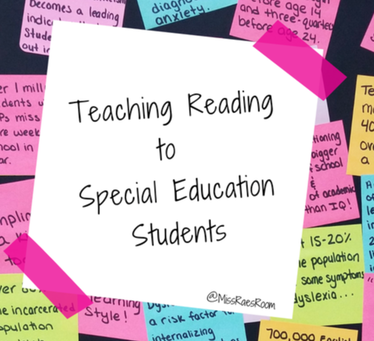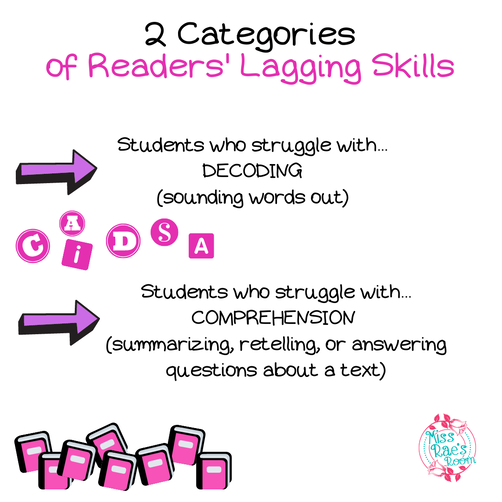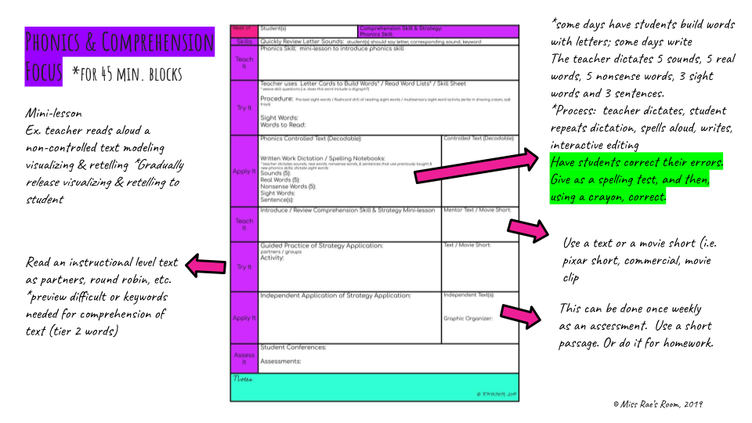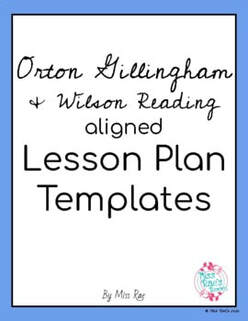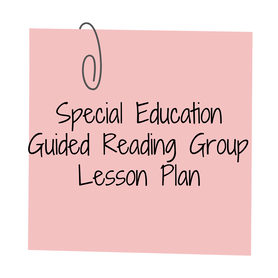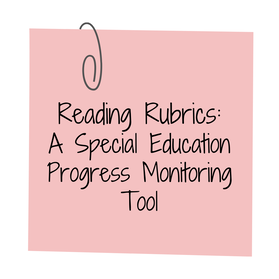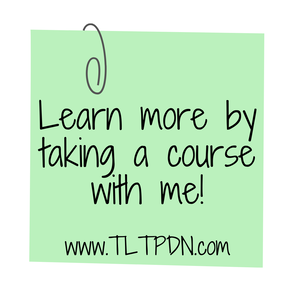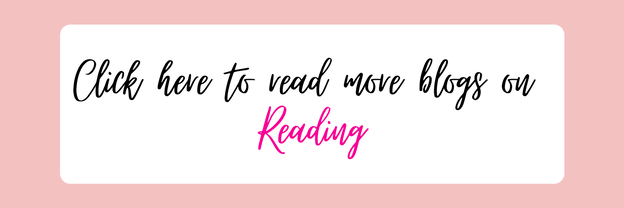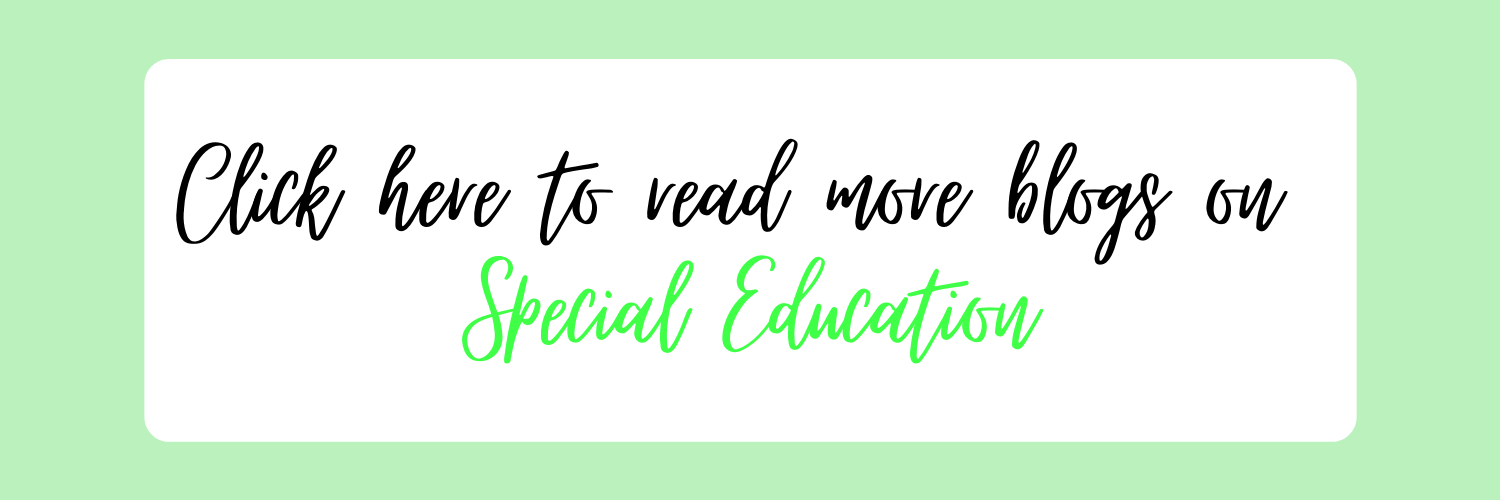Teaching Reading to Special Education Students
Teaching reading to students with learning disabilities in reading means that the instruction is specially designed to meet their individualized learning needs. What this does not mean, though, is that we ignore the science of teaching reading. The science of teaching reading applies to all students, including those with learning disabilities.
The Simple View of Reading organizes the vast amount of reading research into a simplistic model. The model has been proven to work across subgroups of student needs, including those with learning disabilities.
The Simple View of Reading proposes that the goal of reading is to understand what one reads - or comprehension, as we coin it in the teaching world!
The Simple View of Reading proposes that the goal of reading is to understand what one reads - or comprehension, as we coin it in the teaching world!
The model proposes a logical distinction between two broad skills required for reading comprehension. The first skill presented as a requirement is Decoding. Decoding is word-level reading, or the ability to ‘sound out’ an unknown word. The second skill required for successful reading is Linguistic/Language Comprehension. By this, we mean, the ability to understand the spoken language in which the words are written
These two requirements come together to create Reading Comprehension, or the goal of reading. And this goal is the same for all students, including those with learning disabilities in reading!
These two requirements come together to create Reading Comprehension, or the goal of reading. And this goal is the same for all students, including those with learning disabilities in reading!
But how do we make weak readers into strong readers? With these 3 key ingredients...
Increase sight word vocabulary
-provide dozens of exposures to store words for later retrieval (weak readers need this)
-teach phonics instruction and reinforce it (think - constant spiral review)
-teach phonics instruction and reinforce it (think - constant spiral review)
Develop good phonic decoding skills
-teach phonemic awareness skills to an advanced level
Word reading begins with phonemic awareness skills. Phoneme skills are needed for BOTH sounding out new words AND remembering the words we read, both skills needed for comprehension. And because phonemes in words correspond to graphemes in the English
writing system, all of these ways of reading words are easier to acquire when students possess advanced phonemic awareness skills. In saying "advanced", I am referring to the automaticity and accuracy of phonemic awareness skills. For example, say /cup/ now say /cup/ but change the /u/ to /a/. So can a student do this automatically (<3 seconds) and accurately? To be a proficient reader, these skills need to be advanced.
The PAST is a great screener for assessing. (You can grab it HERE)
Word reading begins with phonemic awareness skills. Phoneme skills are needed for BOTH sounding out new words AND remembering the words we read, both skills needed for comprehension. And because phonemes in words correspond to graphemes in the English
writing system, all of these ways of reading words are easier to acquire when students possess advanced phonemic awareness skills. In saying "advanced", I am referring to the automaticity and accuracy of phonemic awareness skills. For example, say /cup/ now say /cup/ but change the /u/ to /a/. So can a student do this automatically (<3 seconds) and accurately? To be a proficient reader, these skills need to be advanced.
The PAST is a great screener for assessing. (You can grab it HERE)
Read, Read, Read
-give students ample opportunities with reading connected text
-practice reading words with learned phonics skills in the context of actual books
Word reading fluency is primarily based on the size of the sight vocabulary/orthographic lexicon, which is based on . . .
-How skilled a student is in remembering words (orthographic mapping skills) combined with reading experience, and orthographic mapping is based on . . .
-Letter-sound proficiency/automaticity (unconscious access to
the sounds letters represent) AND
-Phonemic proficiency/automaticity (unconscious access to phonemes in spoken words)
Therefore, these 3 key ingredients are essentially the 3 key elements of highly effective reading interventions. Each component must be included in instruction in order to assist weak readers in learning at an accelerated rate to close the gap.
But how do we know what our students know? How do we know how much emphasis we should be putting on each skill? And how do we know how long the instruction should focus on each skill?
So first, know your students. Assess their skills to determine their lagging skills.
Check out the assessments that I recommend HERE!
-practice reading words with learned phonics skills in the context of actual books
Word reading fluency is primarily based on the size of the sight vocabulary/orthographic lexicon, which is based on . . .
-How skilled a student is in remembering words (orthographic mapping skills) combined with reading experience, and orthographic mapping is based on . . .
-Letter-sound proficiency/automaticity (unconscious access to
the sounds letters represent) AND
-Phonemic proficiency/automaticity (unconscious access to phonemes in spoken words)
Therefore, these 3 key ingredients are essentially the 3 key elements of highly effective reading interventions. Each component must be included in instruction in order to assist weak readers in learning at an accelerated rate to close the gap.
But how do we know what our students know? How do we know how much emphasis we should be putting on each skill? And how do we know how long the instruction should focus on each skill?
So first, know your students. Assess their skills to determine their lagging skills.
Check out the assessments that I recommend HERE!
To help weak student readers achieve, we must accelerate their rate of learning. This is the only way to close the achievement gap.
Students usually fall into two categories for what is holding them back in reading.
Students usually fall into two categories for what is holding them back in reading.
The first group are those that struggle with decoding (sounding words out).
The second are the students who are unable to summarize, retell, or answer questions about a text. This is the comprehension group.
If your students are struggling with decoding, use a phonics skill lesson plan for short targeted practice.
The second are the students who are unable to summarize, retell, or answer questions about a text. This is the comprehension group.
If your students are struggling with decoding, use a phonics skill lesson plan for short targeted practice.
If your students are struggling with comprehension, use a comprehension skill and strategy lesson alongside your guided reading lesson.
If students are lagging in both areas, use a daily or weekly integrated plan to target both areas simultaneously.
If students are lagging in both areas, use a daily or weekly integrated plan to target both areas simultaneously.
Students who are typically reading significantly below grade level require an integrated approach to reading, targeting both areas: phonics and comprehension.
Finally, create comprehensive reading lesson plans!
Comprehensive reading lesson plans should incorporate:
-extensive teacher-student interaction,
-multisensory learning methods,
-all components of reading: decoding (single word accuracy/automaticity), comprehension, vocabulary, sight word, fluency, plus + encoding,
-special emphasis upon mastery of foundational reading skills and...
-independent application of comprehension strategies to help ALL students access the general education curriculum!
Check out some comprehensive reading lesson plans HERE!
When students receive instruction that is designed to boost their strengths, target their lagging skills, teach them strategies for independently accessing the curriculum, and are continuously progress monitored so instruction can be tailored to lead them to their goals, both teachers and students are able to share in success!
By Miss Rae
References: Kilpatrick, 2015
Comprehensive reading lesson plans should incorporate:
-extensive teacher-student interaction,
-multisensory learning methods,
-all components of reading: decoding (single word accuracy/automaticity), comprehension, vocabulary, sight word, fluency, plus + encoding,
-special emphasis upon mastery of foundational reading skills and...
-independent application of comprehension strategies to help ALL students access the general education curriculum!
Check out some comprehensive reading lesson plans HERE!
When students receive instruction that is designed to boost their strengths, target their lagging skills, teach them strategies for independently accessing the curriculum, and are continuously progress monitored so instruction can be tailored to lead them to their goals, both teachers and students are able to share in success!
By Miss Rae
References: Kilpatrick, 2015
